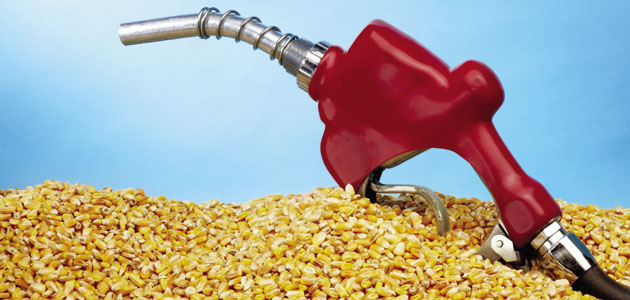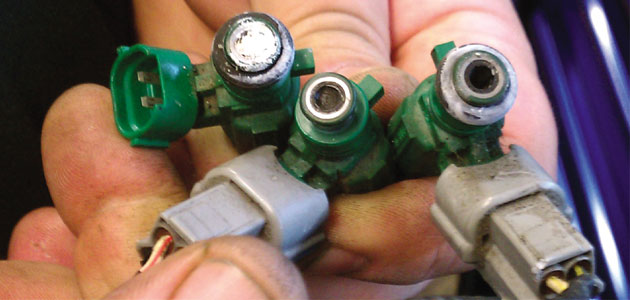
Paul Dobbyn of BG Products looks at the effect that the use of Ethanol in renewable fuels can have on car components.
Under the EU’s Renewable Fuel Transport Obligation, 5% of fuel in member states must come from renewable sources by 2014. This is to increase to 10% by 2020.
The mandates to increase renewable fuel use have meant that petrol suppliers have been blending a mixture of 5% Ethanol to 95% petrol (known as E5 petrol, as it has a 5% mixture of Ethanol). Fuel suppliers can supply up to 10% (known as E10) now and many will take this route as there are financial incentives for doing so.
Ethanol and bio-fuels
Ethanol is the choice for petrol suppliers as it burns reasonably well, although it isn’t a hydrocarbon like petrol (and diesel) because it contains oxygen as well as hydrogen and carbon. The oxygen content of Ethanol is something that is both good and bad for the engine. It is good because it helps to give a cleaner burn, leading to lower emissions. The bad comes from the fact that oxygen is something that assists corrosion; in fact it is oxygen that initiates rust in iron. Ethanol is essentially an alcohol that is produced by fermenting and distilling sugar or starch crops such as wheat, sugar beet and sugar cane.
Diesel is also affected by the renewable fuel legislation. Instead it uses bio-fuel made from blending oil from crops, such as Rape Seed, to mix with diesel and so is more compatible with the oil burning engine. Although it doesn’t present as many problems as Ethanol, there are still some dangers that diesel users face.
In 2010 the DfT estimated that up to 8.6 million vehicles may be incompatible with the new E10 fuel. More recent estimates from the SMMT put the figure at 2.9 million vehicles. Either way, the numbers are alarming.
The impact on a steel rod with an untreated E10 mix

The impact on a steel rod with Ethanol protection

Let’s take a look at some of the problems associated with the new Ethanol mixtures:
Water
Ethanol is hygroscopic, which means it attracts moisture from the air, and absorbs and holds water. Among many things, it is highly temperature-dependent and can freeze in cold weather. If too much water gets into the fuel, Ethanol and water will settle at the bottom of the tank. This process is called ‘phase separation’. Just one drop over the limit can cause all the water to separate from the fuel, leaving an incombustible pool at the bottom of the petrol tank.
Acid
Ethanol is acidic, which accelerates corrosion in metal system components. Some corrosion materials can move through the system and fill the fuel filter. Sealants on pipes and joints in the fuel system can also be adversely affected by a reaction with the acidic ethanol, leading to leaks and deposits moving through the system. Water will also add to corrosion throughout the fuel system, particularly as the Ethanol contains oxygen.
Deposits
Heavier deposits occur in lower concentrations of Ethanol-containing petrol because Ethanol is not compatible with the traditional detergents in petrol. The Ethanol destabilises the petrol and increases its tendency to oxidise and degrade, thus leaving deposits when combusted.
Deposits can also interrupt the fuel/air ratio and cause severe drivability problems, like poor economy and hesitation.
Loss of economy
E5 and E10 mixtures will lower overall fuel consumption for a number of reasons:
1. Ethanol contains less BTUs (British Thermal Units – a measure of its ability to convert to energy) than petrol.
2. The Ethanol’s tendency to absorb moisture lowers the energy value in combustion.
3. The tendency to create deposits interferes with injector spray patterns and the fuel/air ratio.

Excessive heat
A recent US study identified that higher burn temperatures were leading to more carbon deposits than anticipated; these deposits will interfere with the intended fuel/air flow and affect performance. Another consequence of the higher heat was that the oil will heat up and form some sludge; the heat means that the oil and other substances will literally burn onto surfaces of the engine. Piston rings and valves are subject to this “cooking” issue.
Ethanol protection solution
BG Products has carried out a lot of research into the effects of Ethanol and has produced a treatment that is added at each oil change to help protect the vehicle and its performance. The BG Ethanol Fuel System Defender Service keeps the entire fuel system clean and free of damaging deposits that can be caused by Ethanol.
It works through the use of corrosion inhibitors that coat fuel system components, protecting them from corrosive acids. BG’s fuel drier creates a stable solution with petrol, allowing more water to pass harmlessly through the fuel system without affecting the combustion process. When performed regularly, this Ethanol Fuel System Defender Service restores power and efficiency that was lost due to Ethanol-containing petrol.









